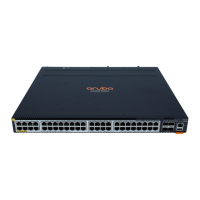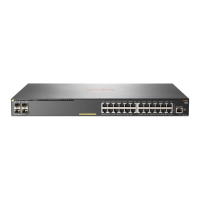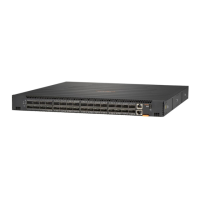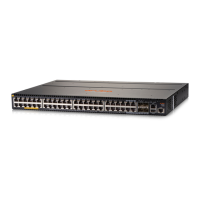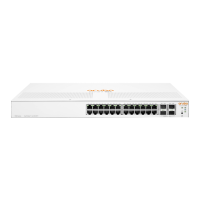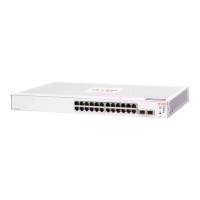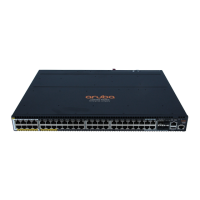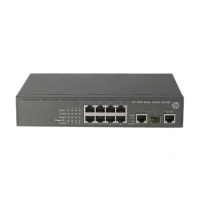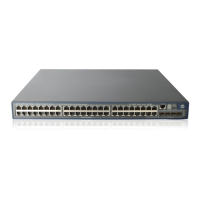CAUTION:
• Protect the switch and its components from damage caused by ESD (Electrostatic discharge):
◦ See the ESD information under Preventing electrostatic discharge damage.
◦ Always wear an ESD wriststrap when handling the switch or its components. Ensure the
strap is reliably grounded when installing or removing switch components.
◦ Hold management modules, line modules, and fabric modules by their edges. Do not
touch any electronic components or printed circuitry.
◦ Store uninstalled modules in antistatic bags.
• Do not ship the Aruba 6400 Series switch mounted in a rack without rst checking for rack
requirements and restrictions. Otherwise, damage to the switch or components may occur.
Damage resulting from using unsupported methods or equipment to ship a rack-mounted
chassis may void the switch warranty. For more information, see Shipping a rack-mounted
Aruba 6400 switch chassis
• Ensure the source circuits for your 6400 Series switch are properly grounded. Connect the
switch to the power sources by using the power cords supplied with the switch or power
supply units.
• Only Aruba-approved power cords may be used with Aruba devices. See the power cord
documentation provided in the latest version of the Aruba 6400 Switch Series Installation and
Getting Started Guide. Lost or damaged power cords must be replaced only with Aruba-
approved power cords.
• If your installation requires dierent power cords than the ones supplied with the switch or
power supplies, be sure that the cords are adequately sized for the current requirements. In
addition, be sure to use power cords displaying the mark of the safety agency that denes
the regulations for power cords in your country/region. The mark is your assurance that the
power cord can be used safely with the switch and power supply. For more on power cords,
see Power cords, power inlet accessories, and power supplies.
• When installing the switch, select AC outlets near the switch for easy access in case the
switch must be powered o.
• Do not install the switch in an environment where the operating ambient temperature
exceeds its specication. (For environmental specications, see Specications.)
• Ensure that the switch does not overload the power circuits, wiring, and over-current
protection. To determine the possibility of overloading the supply circuits, add the ampere
ratings of all devices installed on the same circuit as the 6400 Series switch. Then compare
the total with the rating limit for the circuit. The maximum ampere ratings are printed on the
devices near their AC power connectors.
• Ensure that the air ow through the chassis is not restricted. Leave a front and rear clearance
of at least 30 cm (11.8 inches) for air ow. Air ow direction is front-to-rear. (Fully perforated
rack doors are acceptable within the 30 cm spacing.)
• Install a blank slot cover on any empty management module, line module, power supply, or
AC inlet slot opening in the chassis. This provision improves the ow of cooling air through
the chassis. It also helps to contain radio frequency emissions that may interfere with the
operation of other devices.
• If a power supply must be removed, and then reinstalled, wait at least 5 seconds before
reinstallation. Otherwise, damage to the switch or its components may occur. The power
supply needs this time to dissipate any retained power.
10 Aruba 6400 Switch Series Installation and Getting Started
Guide

